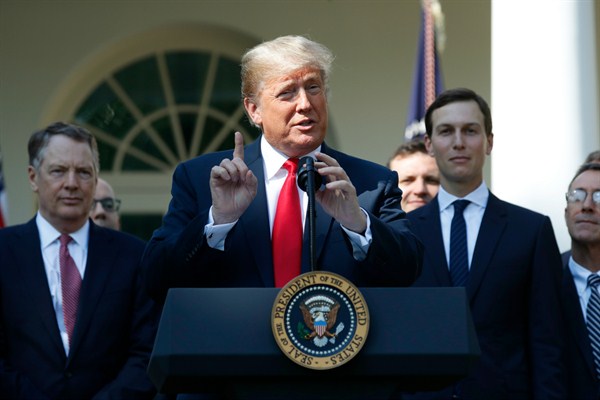“It’s not NAFTA redone. It’s a brand new deal,” U.S. President Donald Trump declared triumphantly at the White House last week, announcing the revised free trade agreement with Mexico and Canada. Don’t tell Trump, but his brand new deal is really just the Trans-Pacific Partnership with a few tweaks, and many fewer countries than the 12 that signed on before Trump withdrew.
American negotiators won concessions in a few areas that were important to them, and made concessions in a few that were important to Mexico and Canada. But the new NAFTA, which Trump clumsily renamed the United States-Mexico-Canada Agreement, or USMCA, is anything but a “brand new deal.” The new North American agreement might more accurately be called the TPP minus nine.
While the deal added chapters to address new 21st-century trade issues, and updated other provisions, it is not a sharp break from the U.S. free trade agreement template that has evolved for two and a half decades from the original NAFTA model. By contrast, Trump’s willingness to use tariffs and threats to withdraw from NAFTA to get a deal are different, but not in a good way.

